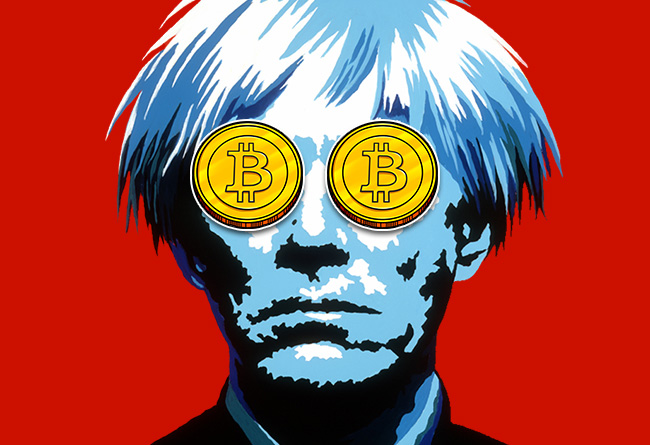Great art often has humble beginnings.
Jackson Pollock (1912-1956) is widely regarded as a father of modern abstract art, but he wasn’t always a hit with critics.
They’d write: “This is not art – it’s a joke in bad taste!”, just “like a mop of tangled hair”. He couldn’t sell his early shows, worked in a studio without electricity and heat, and was so broke at one point that he had to pay for groceries with his paintings.
Today, his paintings rank among the greatest ever in Western history and the most expensive in the world — north of US$200 million!
Now, hold on to that thought for a second.
20 years from now, art critics who trashed non-fungible tokens (NFT) will look back and declare them as the defining point of 21st century art. They will have a complete change of mind, or ‘critical revaluation’ to be polite.
Tate will hold a full-scale retrospective exhibition for the creator of EtherRocks, who remains anonymous. CryptoPunks will be inducted into the Smithsonian as ‘national treasure’. The computer code behind Bored Apes will evolve into AI life form and receive the Congressional Gold Medal. The medal, you guessed it, is an NFT.
NFT art, if we have to generalise, is neither abstract nor humble. NFTs are loud and kitsch. They already fetch record prices at Sotheby’s and Christie’s.
They can represent anything or everything — from the most basic visual building block, a single grey pixel (last sold for US$1.4 million), to an entire digital metaverse in multimedia, 3D and augmented reality (AR) formats.
The most intuitive comparison of NFT art is to that of Andy Warhol (1928-1987) because it is so decidedly ‘commercial’ (which is not a nice thing to say to an artist back then).
This is the guy who painted popular everyday objects like Campbell’s soup cans and Coke bottles and famously elevated them to high art. He reproduced and iterated head shot photographs like those of Marilyn Monroe, Michael Jackson and even Mao Zedong with colourful and playful elements – like what we see with the current profile picture (PFP) trend in NFT.
Warhol combined mass industrial technology (silkscreen) with classic art techniques, raising eyebrows at the time. He didn’t bother producing some of his own art that bears his name, and he didn’t care.
Today, many NFT works are digitally generated by computers. The top creators are more likely to be companies with ‘Labs’ in their name or individuals who rather stay pseudonymous like ‘Pak’. Truly, the medium is the message in NFT art.
Originality is overrated – and this was the central idea to Warhol.
One of the biggest critiques of NFT is that it is so mass reproducible. Replicas and knockoffs are everywhere. The ownership of an NFT is not copyright, there is no legal title, and anyone could freely duplicate a JPEG file on the Internet – so what’s the point?
To Warhol, the more counterfeit copies (of his Marilyns) are out there, the more valuable the real one becomes – and provenance is the one thing NFT does better than all other art forms.
In a 1964 interview, Warhol was criticised by the press for not being original: “You have just copied a common item. Why have you bothered to do that, why not create something new?” To which he replied: “Because it is easier to do!”

But there is a darker side to this than we let on.
The crypto community has always been tribal in nature. And this shows in the way they interact with art. It is not just about being memesy like donning laser eyes, riding Lamborghinis, or using lingo like HODL and REKT.
‘Conspicuous consumption’ seems like a virtue – the nouveau riche shows off their newfound crypto wealth. Gone are the days where rich art collectors hide their precious stash to prevent theft: Art would disappear from public view; bids are discrete and undisclosed.
Now, NFT buyers openly tweet about it and brag about how much they paid. They display it on their avatars like a status symbol. If you’re not keeping up, well, HFSP (have fun staying poor)!
Perhaps, this aligns with Warhol’s concept of mass celebrity where everyone has their 15 minutes of fame. It speaks beyond this, however.
To the crypto community, to be decentralised is to be atomised, isolated and faceless. But ‘alone together’, they are a global tribe, and this tribe needs a carrying card, an identity; which can explain why sushi and spaghetti are not food, but DeFi protocols. Dog coins are never about dogs, but a dogma that gets you into silly fights. Everyone has an inner Feels Guy. And all hail Elon the village moon god.
With NFT art, it opened the door to individuate. It is not just about personal celebrity. If you spend enough time on it, you may find it totally Absurd, Surreal, and Performative – which incidentally are traits of modern art movements.
The NFT community is self-aware, but don’t take themselves seriously. You can’t tell if it’s a cult or a circus and those in it can’t either.
For the love of Warhol, where will NFT art go from here?
As a sign of its own confidence, it is increasingly paying homage to the modern art forefathers: Salvador Dali’s lobster has been NFTed by DJ Paul Oakenfold. Piet Mondrian’s plastics can be personalised as a cool GIF and minted into NFT. Warhol’s banana in an NFT pack was sold at Christie’s for US$3.3 million. The list goes on.
May greatness come upon those who copy shamelessly!
The author is the co-founder of Celebrus Advisory and official appointee of the Tech Expert Network by Malaysia Digital Economy Corporation (MDEC).
For more crypto updates and news to make sense of crypto and blockchain technology, you can visit our sister site chaindebrief and follow its Telegram channel here.
Featured Image Credit: Crypto Art Culture











